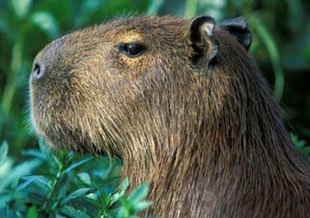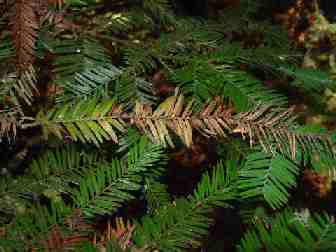Click on image for full size
DAAC - Oak Ridge National Laboratory / NASA
Related links:
Map of the Biomes of the World
Reusing Forests - streaming RealVideo (53 sec.) from NSF
Changing Planet: Disappearing Lizards Classroom Activity and Video
Changing Planet: Bark Beetle Outbreaks Classroom Activity and Video
Changing Planet: Survival of Trees Classroom Activity and Video
Temperate Forests
The temperate forest biome is found in regions where winters are cold and summers are warm. Regions with this climate are common in the mid-latitudes, far from both the equator and the poles. Tropical rainforests are in regions that are consistently warm all year long, close to the equator.
Temperate forests are almost always made of two types of trees, deciduous and evergreen. Deciduous trees are trees that lose their leaves in the winter. Evergreens are trees that keep their leaves all year long, like pine trees. Forests can either have deciduous trees, evergreens, or a combination of both. Another kind of forest is a temperate rain forest. These are found in California, Oregon and Washington in the United States. These forests are made of redwoods and sequoias, the tallest trees in the world.
The amount of rainfall in an area determines if a forest is present. If there is enough rain to support trees, than a forest will usually develop. Otherwise, the region will become grassland.















